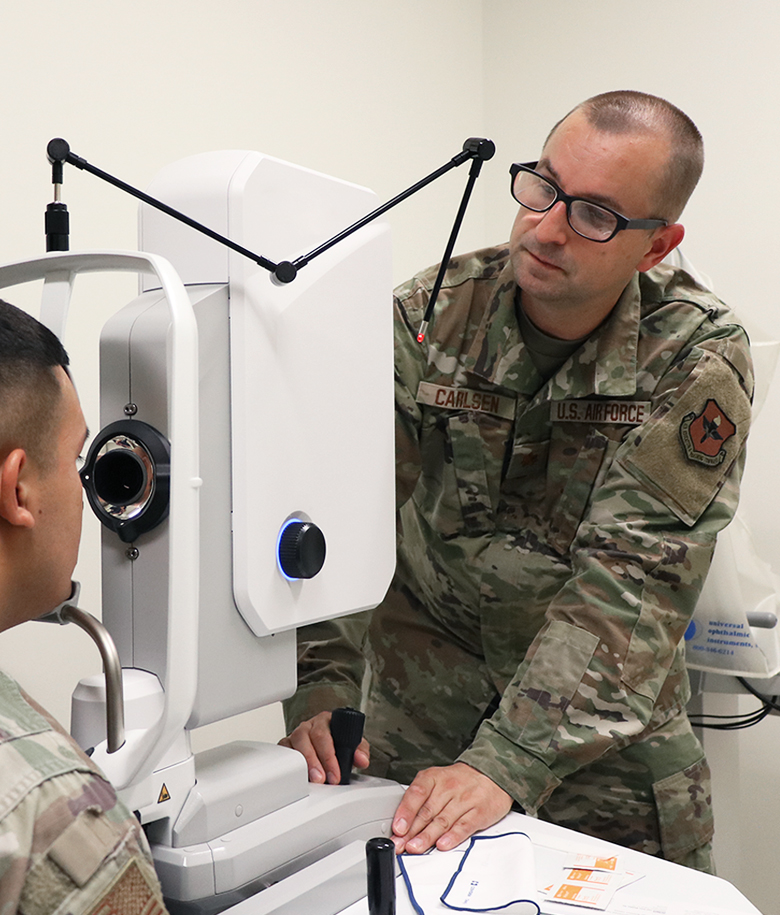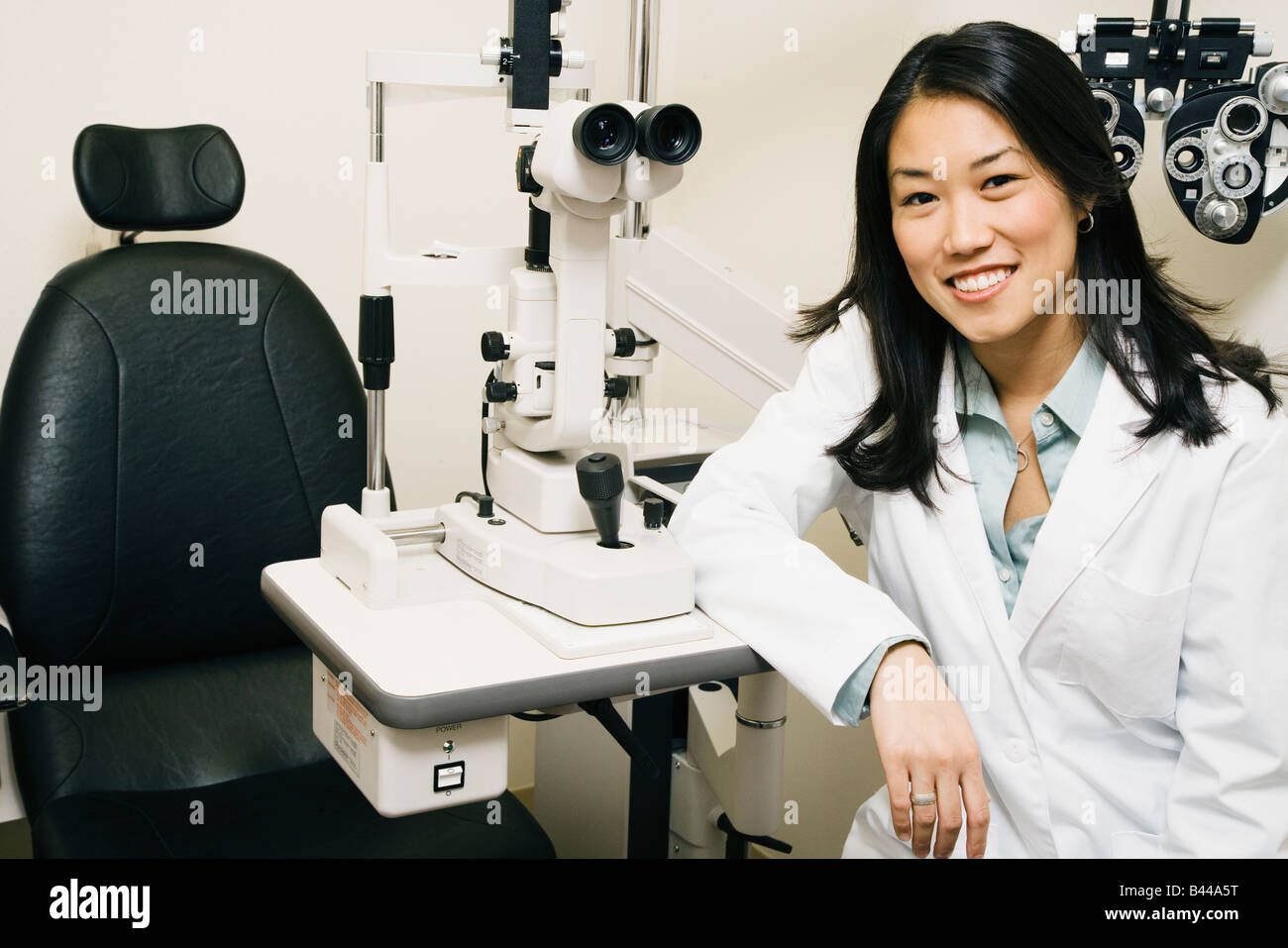Checking Out the most up to date Technical Innovations in Optometry and What They Mean for Optometrists
In the ever-evolving field of optometry, current technological developments are improving exactly how experts approach eye care. From the precision of Optical Comprehensibility Tomography to the nuanced understandings provided by AI-driven diagnostic tools, these innovations are establishing new criteria in client assessment and treatment. Teleoptometry is positioned to redefine availability, ensuring that knowledge goes beyond geographical limitations. As these improvements permeate the method, eye doctors are faced with the obstacle of embracing these devices to enhance individual outcomes. Yet, the question remains: just how will these technological changes redefine the duties and duties within the occupation?
Innovations in Diagnostic Tools
Advancing the field of optometry, developments in diagnostic devices have actually changed the way eye care professionals examine and identify visual disabilities and eye problems. The previous decade has seen considerable technological improvements, enabling more exact and extensive examinations.
An additional secret development is the intro of innovative corneal topography systems, which map the surface curvature of the cornea with precision. These devices are especially useful for fitting get in touch with lenses and diagnosing corneal conditions. Additionally, electronic retinal imaging has changed conventional ophthalmoscopy, offering in-depth, scenic sights of the retina that help with thorough aesthetic examinations.
The development of wavefront aberrometry has actually likewise been important, enabling the evaluation of refractive mistakes with unparalleled accuracy (Opticore Optometry). This innovation assists in personalizing rehabilitative lenses and boosting medical results for refractive surgeries. Collectively, these diagnostic advancements equip optometrists to supply exceptional person care, ensuring early treatment and tailored treatment approaches, eventually enhancing visual health and wellness end results
AI in Individual Management
Structure on the foundation of sophisticated analysis tools, the consolidation of man-made knowledge (AI) in person management stands for a transformative jump for optometry. AI systems are increasingly utilized to enhance performance, accuracy, and customization in patient care. By evaluating large quantities of information, AI can recognize patterns and anticipate possible ocular conditions, making it possible for optometrists to tailor interventions better. This ability is vital in handling chronic eye conditions such as glaucoma and diabetic retinopathy, where early discovery and continuous surveillance are crucial.
Furthermore, AI-driven systems assist in structured individual communications and administrative procedures. Automated organizing, online consultations, and customized follow-up plans not only boost client complete satisfaction yet likewise maximize time administration for specialists. These systems can triage patients based upon the urgency of their conditions, making certain that those in important requirement receive timely focus.
Additionally, AI boosts decision-making by offering optometrists with evidence-based suggestions and treatment paths. By incorporating information from electronic health documents, AI devices supply understandings that educate medical choices, reducing the danger of mistakes and boosting patient results. As AI proceeds to evolve, its role in client monitoring will likely increase, improving the landscape of optometric treatment.
Advancements in Retinal Imaging
In the world of optometry, retinal imaging has observed amazing technical advancements that are improving diagnostic abilities and client treatment. Developments such as Optical Comprehensibility Tomography (OCT) and fundus photography have actually reinvented exactly how eye doctors assess the retina and picture.
Boosted imaging techniques like OCT angiography are further refining diagnostic precision. Opticore Optometry. Such improvements assist in the identification of minute retinal modifications that could represent illness development.
Moreover, advancements in fabricated intelligence are increasing retinal imaging by making it possible for automated analysis of large datasets. These systems help eye doctors in recognizing patterns indicative of pathology, therefore enhancing diagnostic precision and performance. Jointly, these developments are changing retinal imaging into a cornerstone of modern eye treatment, improving outcomes and broadening restorative opportunities.
Teleoptometry's Expanding Role
Teleoptometry is progressively ending up being an important element of eye treatment, driven by improvements in data and diagnostic tools. As optometry accepts electronic change, teleoptometry helps with remote consultations, enabling optometrists to extend their services past traditional boundaries. This is particularly advantageous in rural and underserved locations where accessibility to specialized eye treatment is typically restricted. By leveraging high-resolution video conferencing and visit homepage advanced retinal imaging, eye doctors can carry out detailed eye exams from afar, ensuring prompt medical diagnosis and treatment.
The assimilation of synthetic knowledge (AI) additional enhances teleoptometry, making it possible for the evaluation of visual information and aiding in the discovery of ocular problems such as glaucoma and diabetic retinopathy. AI-powered formulas can rapidly analyze complicated imaging information, offering eye doctors with important understandings that reinforce clinical decision-making.
Additionally, teleoptometry sustains continuity of treatment through seamless assimilation with electronic wellness records (EHRs), enabling optometrists to preserve comprehensive individual histories. When consulting with various practitioners., this makes sure that people receive personalized and constant treatment also.
Regardless of these advantages, difficulties stay, consisting of guaranteeing data protection and managing client expectations. However, teleoptometry stands for a considerable stride in the direction of even more accessible, effective, and patient-centered eye treatment. As modern technology evolves, its function is poised to broaden further.

Future Patterns in Eye Treatment
A myriad of cutting-edge fads is set to reshape the future of eye treatment, driven by technological innovations and the evolving needs of patients. One substantial fad is the assimilation of expert system (AI) in diagnostics, which promises to enhance the accuracy and performance of eye exams. AI formulas can analyze huge quantities of data from retinal pictures, possibly detecting problems like diabetic retinopathy and glaucoma earlier than conventional methods.
In addition, personalized medication is acquiring traction in optometry, with hereditary testing informing customized therapy strategies. This method aims to maximize individual results by tailoring treatments to private genetic accounts. Wearable technology, such as clever get in touch with lenses, is also imminent, offering real-time surveillance of intraocular pressure or sugar degrees, hence supplying continuous understandings into eye and systemic health and wellness.
The fostering of enhanced fact (AR) and online fact (VR) in training and individual education is one more arising pattern. These innovations supply immersive experiences that can improve understanding and skills both for people and optometrists. As these patterns advance, optometrists need to stay abreast of technological advancements to supply cutting-edge treatment, making sure improved person end results and fulfillment in the dynamic landscape of eye care.
Verdict

Jointly, these analysis developments equip optometrists to deliver remarkable person treatment, ensuring early intervention and customized treatment techniques, ultimately improving aesthetic wellness outcomes.

As these innovations proceed to advance, optometrists have to adapt and integrate them right into practice, eventually maximizing operations efficiency and raising the criterion of eye treatment supplied to patients.